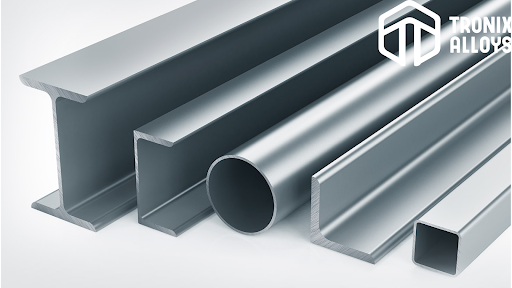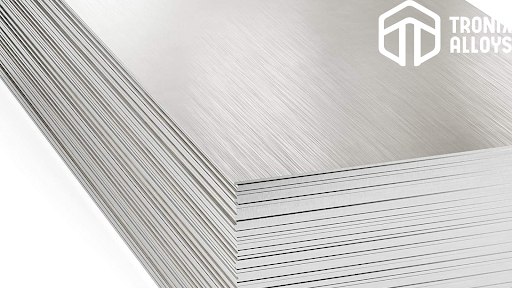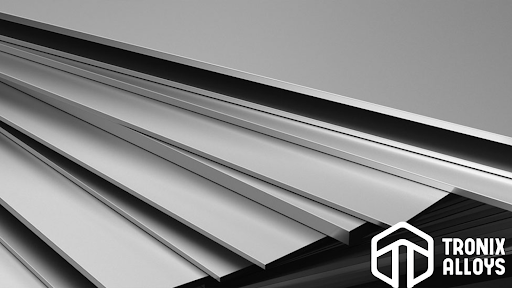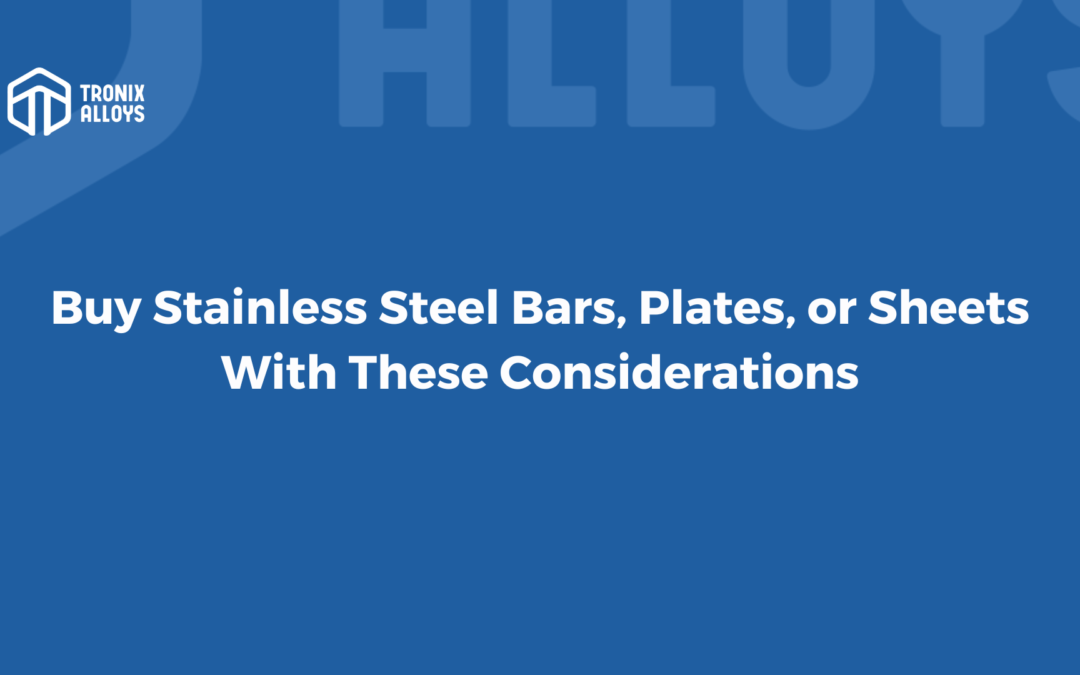
As a first step, we will discuss the various characteristics of alloys, finishes, and other more metallurgical details of stainless steel, before we examine the various shapes, formats, and dimensions of stainless steel available today. If you intend to use them for different purposes, they will all offer different benefits. Having a thorough understanding of all the different formats available to you will allow you to make the best decision for yourself and ensure that the format that works best for you will prevent you from incurring additional costs, time, and effort as a result of having to go through additional processing before you can start using your sheet of stainless steel.
STAINLESS STEEL SHEET

When it comes to fabricating products and meeting your design specs, stainless steel sheet is the most versatile option, as it can be moulded to fit your dimensions and shapes.Stainless steel sheets range in thickness from a few millimeters to six millimeters, depending on what you need.
Products over this thickness tend to take the plate stainless steel form rather than the block form.If you buy your sheet from the U.S., you might also find that it is measured in gauges rather than millimeters, so pay attention to this.
Stainless steel suppliers typically offer a variety of standard sizes. In addition to 48-inch-by-120-inches (roughly 122 centimeters by 305 centimeters), 60-inch-by-120-inches, 72-inch-by-120-inches, and 152-centimeters-by-305-centimeters, there is also 72-inch-by-120-inches (roughly 183 centimeters by 305 centimeters).
Additionally, many suppliers can provide metal cutting services such as plasma cutters, waterjet cutters, and other cutting equipment to ensure that you receive a product that is precisely sized and shaped.
As most sheets are delivered in an annealed state, they provide excellent strength and malleability. Sheets can form or reduce the weight of the stainless form to produce lighter equipment and parts.
When stainless steel sheets for sale are shipped directly from the factory to your press for shaping or welding table for fabrication, you can often do the minimal amount of pre-processing or preparation required to take the stainless steel sheets directly from the truck.
The sheets are also easier to store and take up less space since they are often cut to standardized sizes.
Consider any precautions you can take to avoid marring the surface finish of stainless steel with a mirror or high-gloss finish when stacking or storing it.
As well as being used in chemical, construction, food service, marine, transportation, and textile industries, stainless steel sheet is also used in the automotive industry.
STAINLESS STEEL PLATE

When it comes to their characteristics, stainless steel plates and stainless steel sheets have many similarities.
Due to its higher thickness, this type of coating usually has a smaller surface area than most other coatings.
Standard sizes range from twelve inches by twelve inches (or thirty centimeters by thirty centimeters) to 48 inches by 120 inches (roughly 122cm by 305cm.)
As with sheets, you can also order these with custom cuts and sizes, so they are made to precisely fit your intended application or any special requirements you may have.
Since thicker pieces are typically heavier, thicker pieces will be heavier when compared to stainless steel sheets of comparable size.
Depending on the situation, this can also mean a greater degree of strength.
The chemical industry, construction, food and beverage service, maritime and transportation, as well as the textile industry require stainless steel plates.
STAINLESS STEEL BAR

In contrast to stainless steel plates or sheets, stainless steel bars come in a variety of shapes, such as round, square, hex, angle and flat bars, and hollow bars.
They offer you a quick way to narrow down your choices to find the perfect bar type for you based on their shape.
Stainless steelbar are available in a wide range of thicknesses and diameters, just like stainless steel plates and sheets. The standard sizes range from 3mm to 25mm, depending on their shape.
Flat bars are often used to create base plates, bumpers, and brackets or to reinforce important places where plates aren’t a good option, such as brackets and bumpers.
A round stainless steel bar (sometimes called a stainless steel round) is a machining material that is very useful for making fasteners, threaded tubes, shafts, and other items that require round stainless steel bars.
Many common structural beams, like I beams, H beams, and C beams, are used to bear weight, and hexagonal and hollow beams are also common weight-bearing elements. Though hexagonal bars are able to be used for the machining of stainless steel rounds, they can also be manufactured quickly for nuts and other fasteners that would not have been possible in the absence of stainless steel round bars.
Square bars are ideal for both types of structures and loads, as well as for various fasteners because of their shape and format.
OTHER TRAITS AND CHARACTERISTICS TO CONSIDER
You must consider more than just the format when choosing the right stainless steel product. some consideration of the stainless steel alloy to use, the preferred finish, and other factors that may affect the component’s life cycle and overall suitability for the budget you are working with.
GRADES TO CONSIDER
You can find most of the plates, sheets, and bar plate you need in more than one alloy, including 200, 300, and 400.
Special grades may be available in certain areas for specific applications, so it is worth checking.
In most cases, the 300-series stainless steel is the best balance between price, weight, fabrication ability, and corrosion resistance.
However, 400-series steel is extremely popular in food service applications, medical settings, and among those who work with food.
Consult our guide to stainless steel grades and families for more information about the various stainless alloys and their characteristics.
FINISHING TOUCHES
Stainless steel finishes are also a critical factor that affects total costs and optimizes your stainless steel for its intended purpose.
Although many finishes look impressive, they are not only very easy to pick up fingerprints, but they also show scratches and other wear much more quickly than other finishes.
If they’re in an environment with heavy traffic or touch, you may need to spend excessive time maintaining the finish.
A protective liner is often recommended in such situations to prevent mishaps from occurring. It is important to take extra precautions when storing, fabricating, and assembling steel to prevent damage to it.
Brushed finishes provide an easy-to-clean and easy-to-maintain aesthetic that is popular in the food industry. In addition, they are much more convenient to clean and maintain than polished surfaces.
If you plan to do extensive fabrication or welding, you may find that applying a finish yourself is more convenient and easier than spraying it on.
If this occurs, choosing a product with a 1-2, 2B, or 2BA finish may result in significant cost savings and greater flexibility.
Our guide to stainless steel finishes gives you more information such as typical uses and any considerations you should keep in mind when choosing stainless steel finishes.
FABRICATION METHODS
Final consideration: this discussion touches upon almost every aspect discussed so far. Keep in mind the stresses that might be applied to steel when cutting, welding, riveting, or altering it in any way, as well as the treatments that might be required in order to restore it to its original state, whenever you intend to cut, weld, rivet, or modify it in any way.
When welding extensively or using plasma cutting, for example, you might want to consider pickling, electropolishing, or other heat treatments to ensure that the passive layer is properly repaired, thereby ensuring the best possible corrosion resistance for the plasma cutters. Any hardware used for riveting or fastening must be considered to minimize galvanic corrosion risks.
The passive layer may need to be repaired effectively if you have been welding extensively or have used plasma cutting, for example, by using pickling, electropolishing, or other heat treatments. This will help plasma cutters achieve the best possible cutting results.
By understanding these factors in advance, you can avoid unpleasant surprises, optimize your costs, and choose stainless steel products best suited to your needs and environment, reducing the possibility of maintenance surprises.
SUMMARY
- Stainless steel sheets are therefore one of the most popular stainless metal products for fabrication and forming.
- Typically, sheets reach a maximum thickness of 6mm when measured in millimeters.
- In some cases, gauges or inches are used instead of gauges or inches when describing thickness.
- Pre-cut sheets are available in standard sizes ranging from 4 feet (1.2m) to 6 feet (1.8m) wide and 10 feet (3m) long, but they can also be customized.
- In most cases, suppliers offer customized sizes and cutting services, but they are not common.
- Sheets are often delivered annealed.
- As stainless plates are heavier due to their thickness, they are often available in smaller sizes than stainless steel plates.
- Due to the cutting requirements associated with this thickness, custom sizing may also be limited.
- The increased thickness can, however, be a plus for strength depending on the application.
- Bars made of stainless steel come in a variety of shapes and sizes.
- Customers can choose from flat steel plate, round stainless steel bars, hexagonal bars, square bars, and hollow bars.
- In nearly every industry, bars are used in a variety of ways.
- Stainless steel bar, plate, or sheet properties can also be affected by the grade of stainless steel sheeting you select.
- Most applications that require a balance between cost and corrosion resistance will benefit from steels in the 300-series.
- Due to their ability to conduct high temperatures, 400-series steels are commonly used in food and medical environments.
- In addition to the metal bar, plate, or sheet, the finish can also affect your choice of stainless steel bar, plate, or sheet. Mirrors may look great, but they also accumulate fingerprints and are easier to wear and smudge. A brushed finish, on the other hand, can repel smudges, knicks, and marring.
- Take into consideration any additional treatments or special methods required to ensure that your stainless sheet is corrosion resistant and strong when cutting, welding, riveting, or otherwise modifying it.
- Pickling or electropolishing can prevent corrosion caused by heat exposure.
- It is important to avoid contamination and encourage passivation when recovering from damage caused by fasteners or threading.

